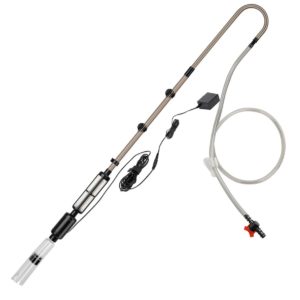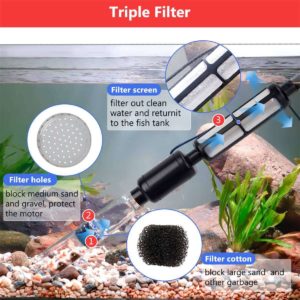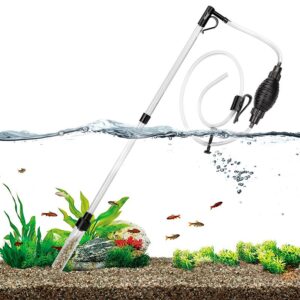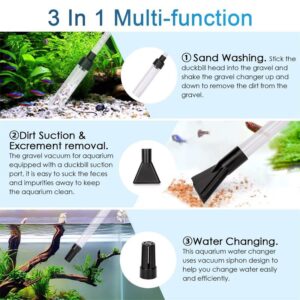What is the Best Way to Clean Aquarium Sand
As an environmentally friendly substrate, aquarium sand is helpful to anchor aquatic plants and make your tanks look more natural. Commonly, aquarium sand comes in various types. For instance, sea sand, reef sand, river sand, black quartz sand, coral sand, live sand, etc. Also, each sand type can meet different tank requirements.
In this article, we are going to talk about things like aquarium sand. Plus, you will walk away with a much better understanding of aquarium sand. You will learn how to clean aquarium sand and how to wash sand. Rant over, let’s begin.
Why use sand substrate in aquariums
Aside from making your tank look more natural, are there any other reasons for using sand substrate in aquariums? In this segment, we will discuss why to use sand substrate in aquariums.
Generally, aquarium substrate is an essential part of most tanks, like planted tanks. The most common substrate consists of sand, gravel, aquarium soil, etc. Next, we will cover some benefits of using the sand substrate.
- Improve the ornamental value of your tank: Adding sand brightens your tank and makes it look more natural.
- Sand substrate is beneficial for some fish: Some fish may consume sand, which makes sense in digestion. Besides, sand is the best option for catfish and burrowing species. Because other substrates, like pebbles and rocks, would be harmful to them.
- Sand is a great option for most planted tanks. It can anchor aquatic plants, while it can also add color to aquariums.
- Sand is smaller than gravel, which provides more surface for beneficial bacteria to grow.
- Easy to clean: compared to gravel cleaning, sand cleaning is more accessible and less time-consuming. Because fine sand reduces the gap, accordingly, the waste may just build up on the surface.
How long should wash aquarium sand?
You can not procrastinate doing aquarium sand cleaning. Otherwise, your aquatic pets may suffer death. Because waste, debris, uneaten food, fish feces, or other unnecessary substances may accumulate on the sand substrate surface. As the substances build up, your tank may lose balance. Consequently, regular cleaning is helpful to maintain great water conditions and keep aquatic pets and plants healthy. Commonly, it is better to clean the sand once every two weeks.
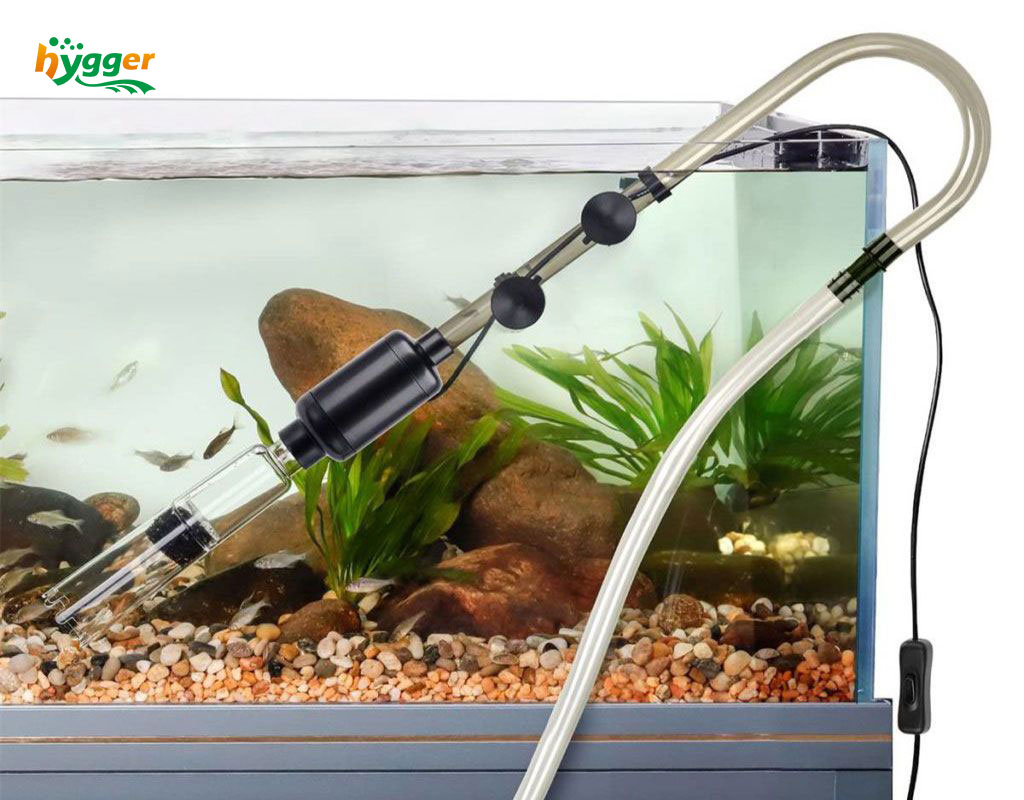
By the way, sand substrate maintenance is different from gravel substrate maintenance. As the sand is smaller than gravel. Hence, the waste accumulation would be mainly on the sand surface. On the contrary, the gravel substrate, waste, debris, etc. may get trapped in gaps between the gravel. As a result, gravel substrate may need more frequent cleaning.
How to clean aquarium sand with a siphon
Clean aquarium sand with a siphon
A siphon or a gravel vacuum is one piece of aquarium equipment that brings a handful of benefits to tank cleaning and maintenance. Featuring diverse sizes and materials, different siphons serve various tank types. Just choose one according to your tank status. After that, a question would come into your mind – how to clean aquarium sand with a siphon? Below are some tips.
As for partial cleaning, a siphon cleaner is great. You can just stir the sand gently and then use the siphon to remove the feces, waste, and other debris. Additionally, if you want to clean the sand thoroughly, you can follow the steps mentioned below. First, you should remove aquatic pets, plants, and aquarium decor from another tank. Then, suck out half of the water in your aquarium. After that, you can clean the sand with an electric gravel cleaner.
A gravel cleaner can remove waste, debris, and other impurities from the sand. After cleaning, rinse the sand with fresh water. Next, you can add plants or other things back to your aquarium. Finally, refill the purified water and add fish to the aquarium.
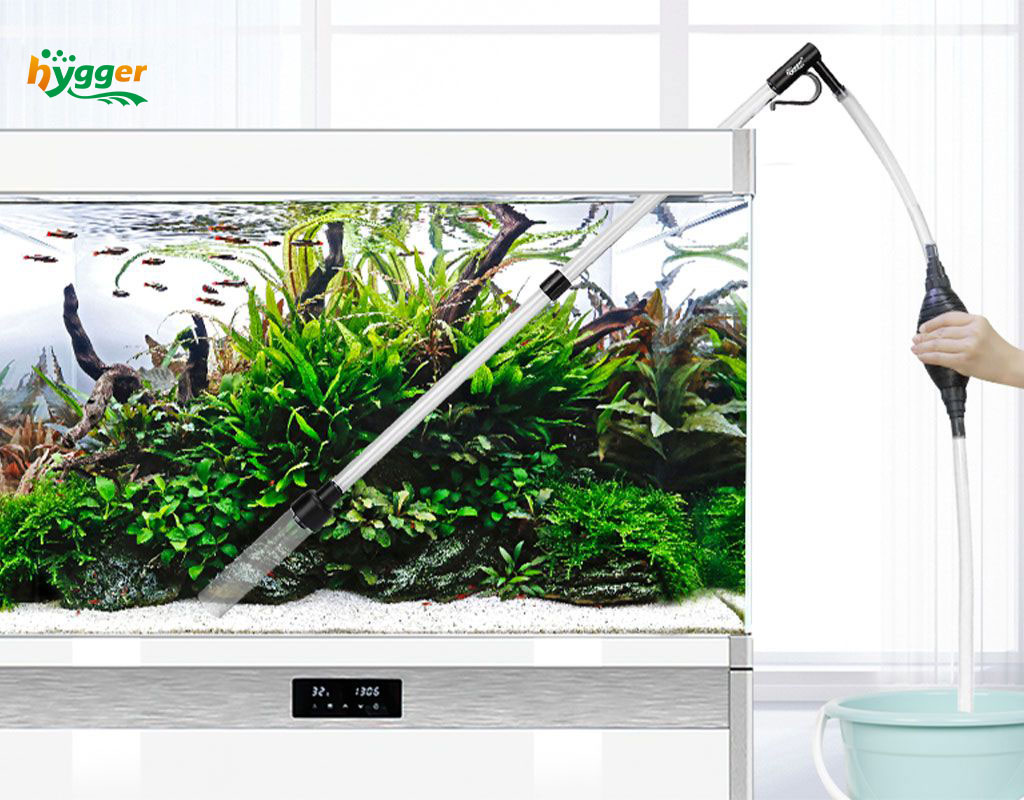
Clean aquarium sand with the help of sand-cleaning fish
Sounds interesting? Actually, in addition to algae-cleaning fish, there are also sand-cleaning fish. Like, Corydoras, Loaches, and Geophagus. Nonetheless, it does not mean you do not need to clean the sand, change aquarium water, or monitor the water quality.
Clean aquarium sand with a bucket or a bowl
Facing no siphon, just prepare a bucket or a bowl. Before cleaning, you should remove the fish, plants, and other creatures from another tank. Then, scoop the sand into the bucket. Then stir the sand with your hands, and rinse it until the water is clear. After that, you can put the sand back into your tank, and refill the water. But the way is not friendly for large fish tanks.
Keep your aquariums healthy
In a word, cleaning aquarium sand before and after use is vital. Uncleaned sand may contain toxic substances and bacteria, which are harmful to your aquarium, and even lead to health problems for fish and other creatures. Moreover, toxic substances and bacteria accumulation are detrimental to fish and plant growth. In addition to this, without daily maintenance and regular cleaning, the sand would become dirty as uneaten food, fish feces, and other debris accumulate. As a result, the water quality would be poor, which could be a threat to fish health.
By the way, there are some pointers about how to clean aquarium sand before use.
It is quite easy to clean the aquarium sand before use. Just put the aquarium sand in a strainer, and then rinse it with tap water. However, you may need to rinse many times until the water becomes clear. After that, you can add the sand to your aquarium.
Additionally, if you want to learn more about sand cleaning in heavily planted aquariums, you can go to How to Clean Sand in a Heavily Planted Aquarium.

